This post may contain affiliate links. For more information, please see our affiliate policy.
One of the biggest wine trends lately? Everything pink! My Guide to Rosé Wine offers a primer on this popular category, including how rosé wine is made, the best rosé wine food pairings, and beyond.

Think all pink wines are the same? This rosé wine guide for beginners is here to convince you otherwise. This category has come a long way since the 1980’s obsession with White Zinfandel. Far from being sugar bombs, today’s rosé wines range from lean, zippy, and fruity to full, savory, and prime for pairing with Thanksgiving dinner.
I’m revealing the shared features of all rosé wines, then how to taste and tell the difference between different rosé wine styles. Then, since everything is better with snacks, discover the best recipes to pair with rosé wine.
Table of Contents
What is Rosé Wine—And How Is It Made?
Rosé wines are a style of fermented grape juice that’s made using some, but not all, of the grape’s skin color in the juice. Just like with white and red wines, rosé wines are available in still and sparkling varieties, and as single grapes or blends.
Rosés are made around the globe in countries that make other types of wine, but France, Spain, South Africa, Italy, and the U.S. (including Oregon and California) are prolific rosé producers.
To score their signature flavor qualities (more on this shortly) and pretty pink hue, winemakers generally turn to one of three rosé wine production styles.
- Skin Contact: The most classic rosé winemaking option involves partial fermentation alongside the grape skins. During this time, the skin emits some color and tannins (the astringent, tongue-drying quality you might be familiar with from drinking tea and red wines). The skins are then separated from the flesh, and fermentation continues. These rosés tend to be higher in acidity and lighter colored than saignée rosés.
- Direct Press: Another fairly common rosé winemaking style is direct press, which is employed when the rosé is made with red grapes. After the red wine grapes are harvested, they’re pressed to extract the juice from the skins. The flesh and skins are separated early in the process, which means the skins release just enough color to make pink wine—and enough flavor to give a quiet nod to the original red grape.
- Saignée (French for “bleeding): To use this alternative rosé winemaking process, winemakers remove (AKA “bleed off” or “drain off”) a portion of the juice from post-crush red wine grapes. The juice left in the tank is then in contact with a higher proportion of skins, which yields a more concentrated, rich, and tannic red. The strained-off juice is separately converted into rosé that’s richer and more fruit-forward than citrusy.
No need to “cellar” or age either of the above rosé wine styles. Besides vintage rosé Champagnes, pretty much every style of rosé wine is best enjoyed within 2 years of its release date. After that, it may begin to lose some of its freshness and brightness.
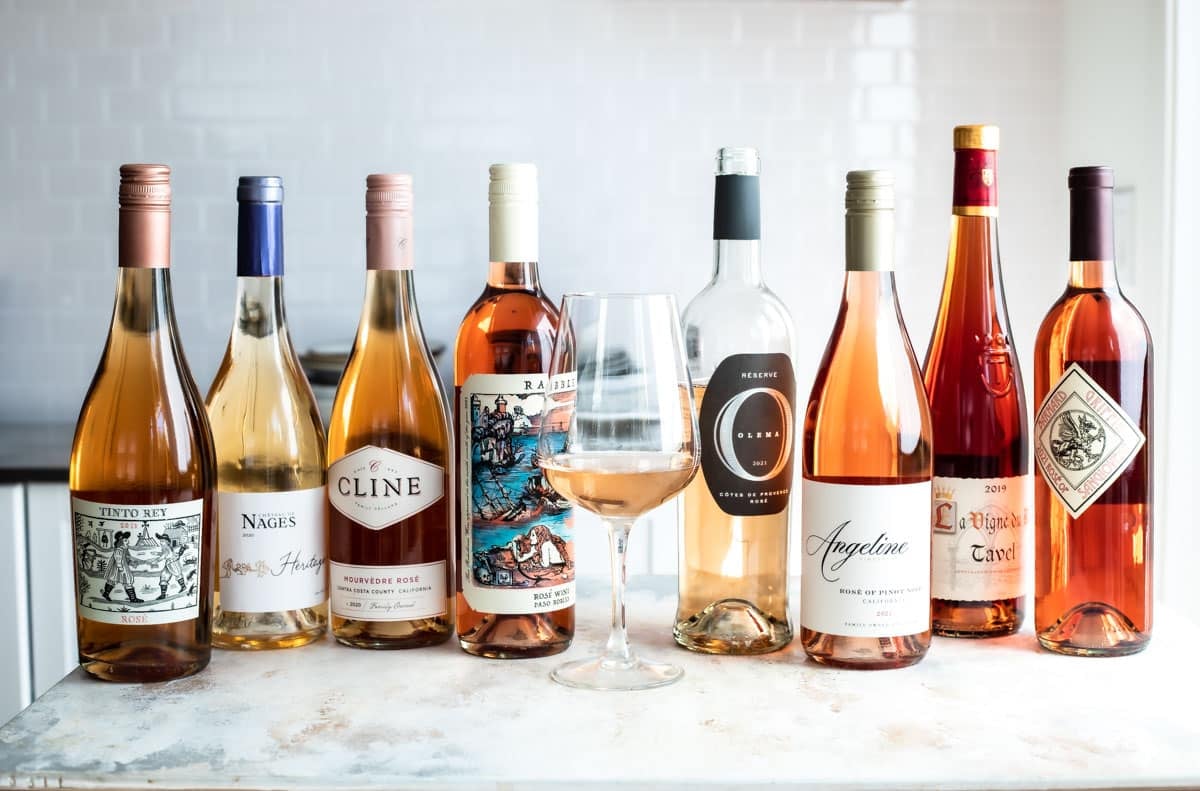
The Qualities of Rosé Wine
Regardless of how the wine is produced or where it’s made, all rosés share a few common details.
First, the color. Rosé wines range from pale salmon to deep, vibrant pink.
Next, acidity, that bright, tart element that makes your mouth water when you sip; acidity is the counterpart to sweetness. The higher the acidity in wine, the lower the residual sugars, and vice versa. Vinos with a good dose of acidity are especially lovely as food-pairing wines.
Finally, flavor notes. We often describe red wines as fruity, spicy, or earthy, and white wines as floral, fruity, and citrusy. Rosés can be fruity (both citrus and berries), herbaceous, floral, and/or vegetal.
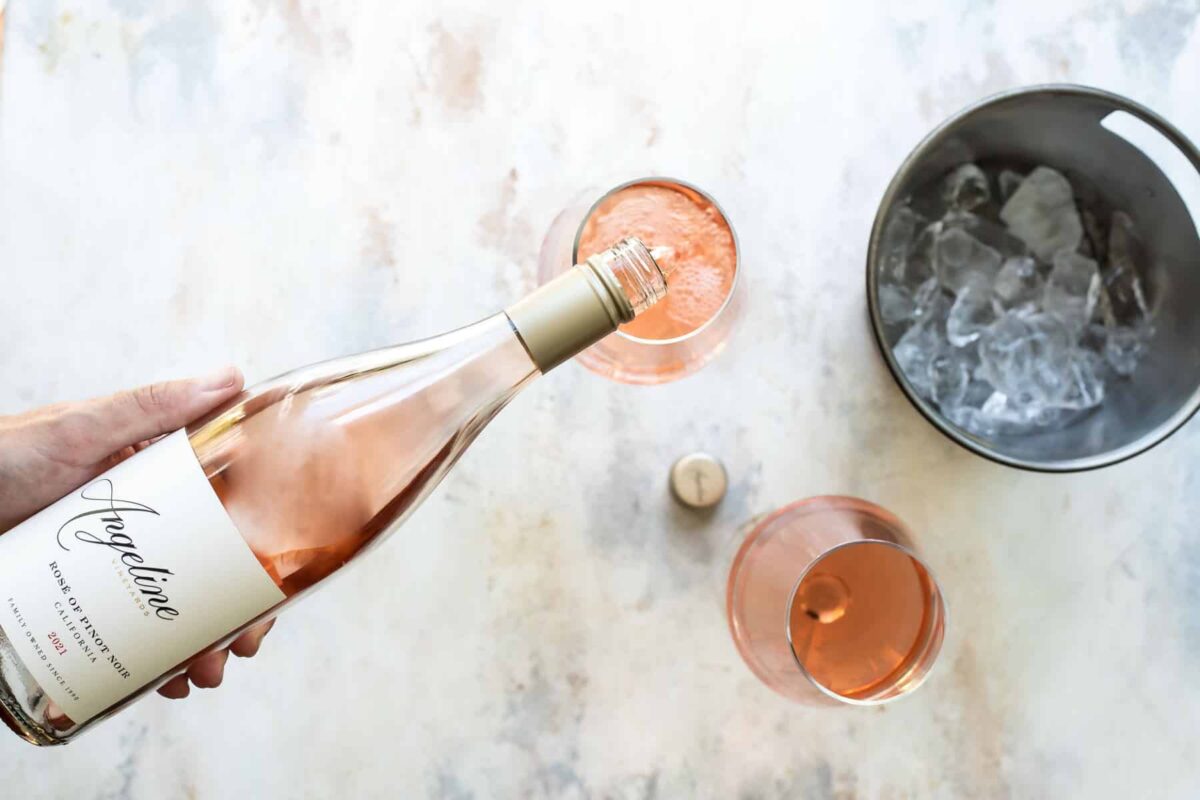
Rosé Wine Categories
True, all rosé wines might look pretty similar, but where the grapes are grown and how the wine is made can make a noticeable difference in the finished product.
Light rosé wines are pale pink and deliver fresh mint, grapefruit, and strawberry flavors.
- Provence rosé
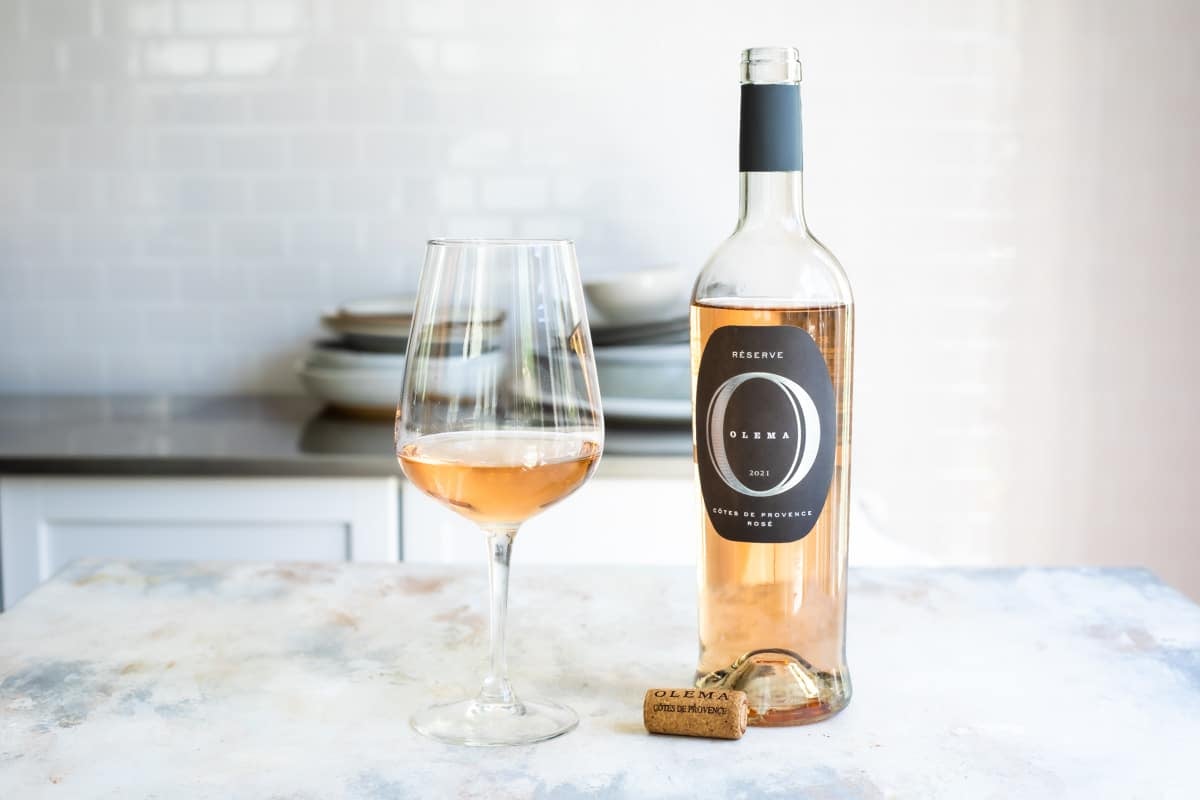
Medium floral rosé wines appear a couple shades darker, and sometimes a touch orange-pink. These may taste like fresh herbs, cherries, or rose petals.
- Sangiovese rosé
- Mourvédre rosé
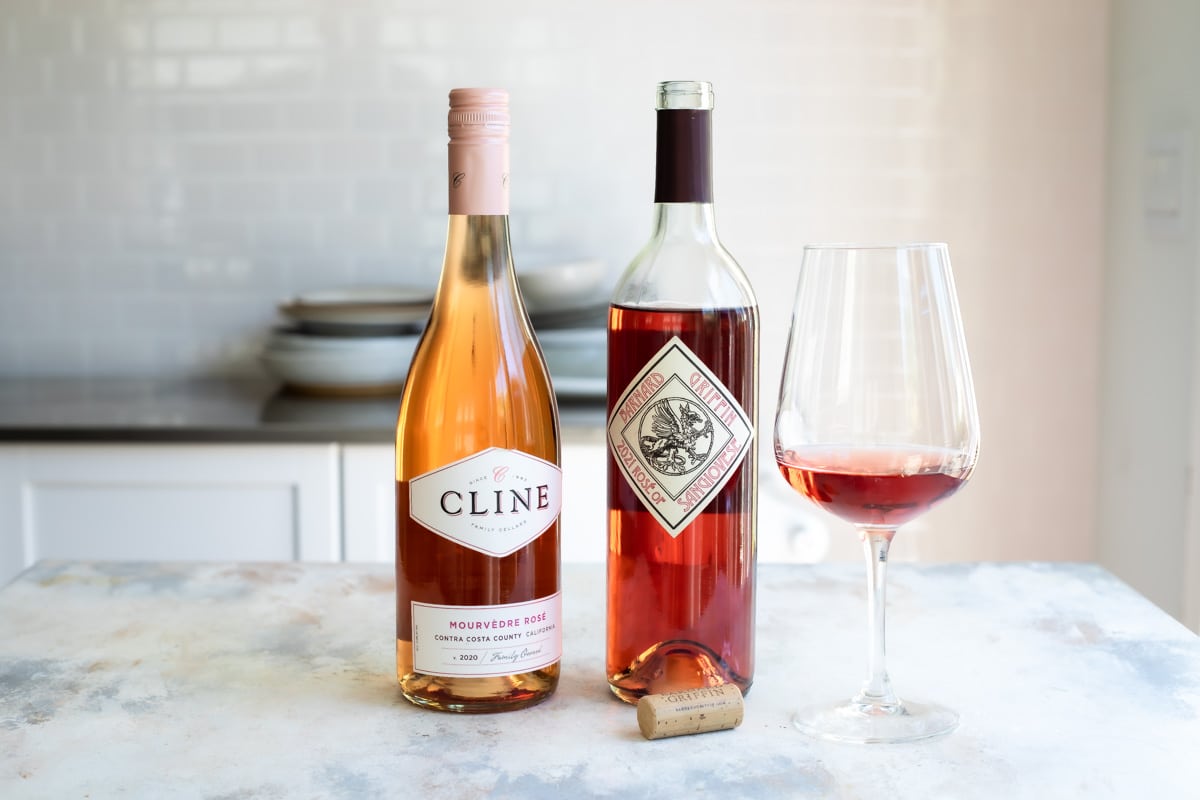
Medium round rosé wines are deeper hued; around the color of a vibrantly pink salmon filet. You might notice notes of white pepper, raspberry, or hibiscus.
- Grenache rosé
- Pinot Noir rosé
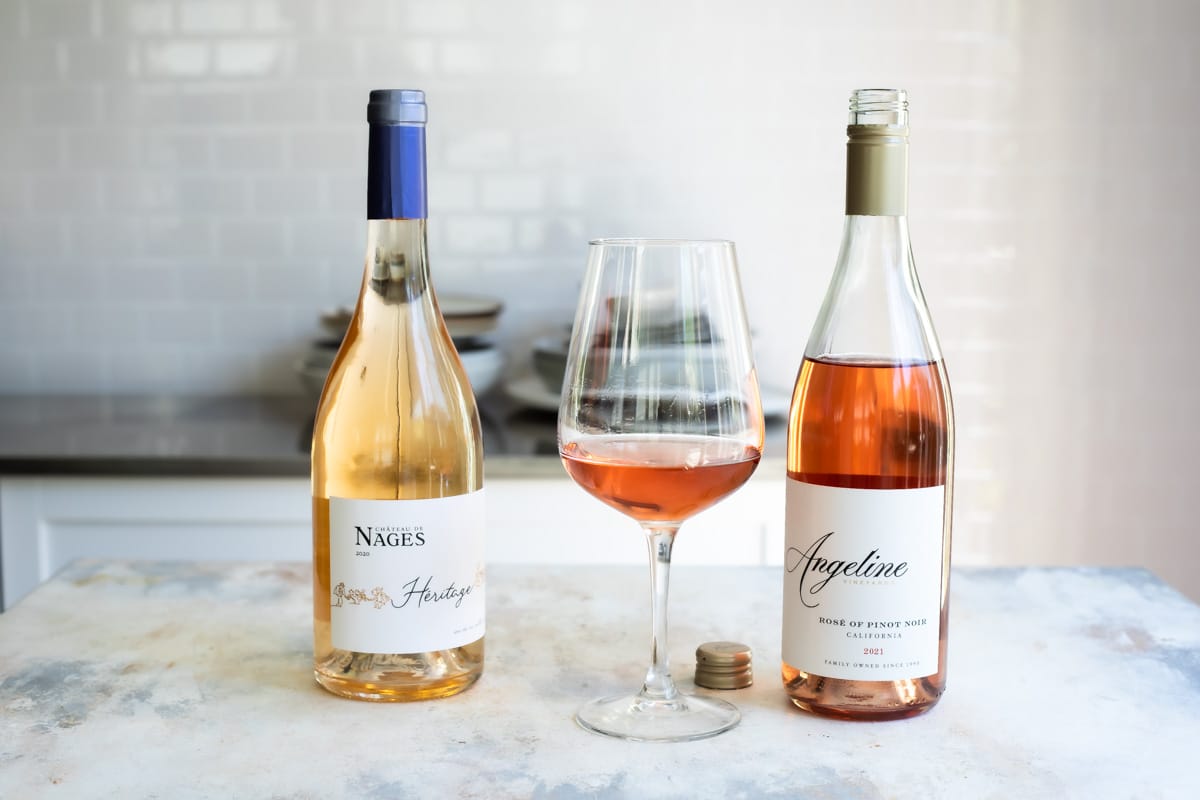
Full and savory rosé wines are the darkest of all and, at first glance, could be confused with a light-bodied red wine. These usually deliver black pepper, bell pepper, and fruit jam flavors.
- Tempranillo rosé
- Cabernet Sauvignon rosé
- Tavel rosé
- Syrah rosé
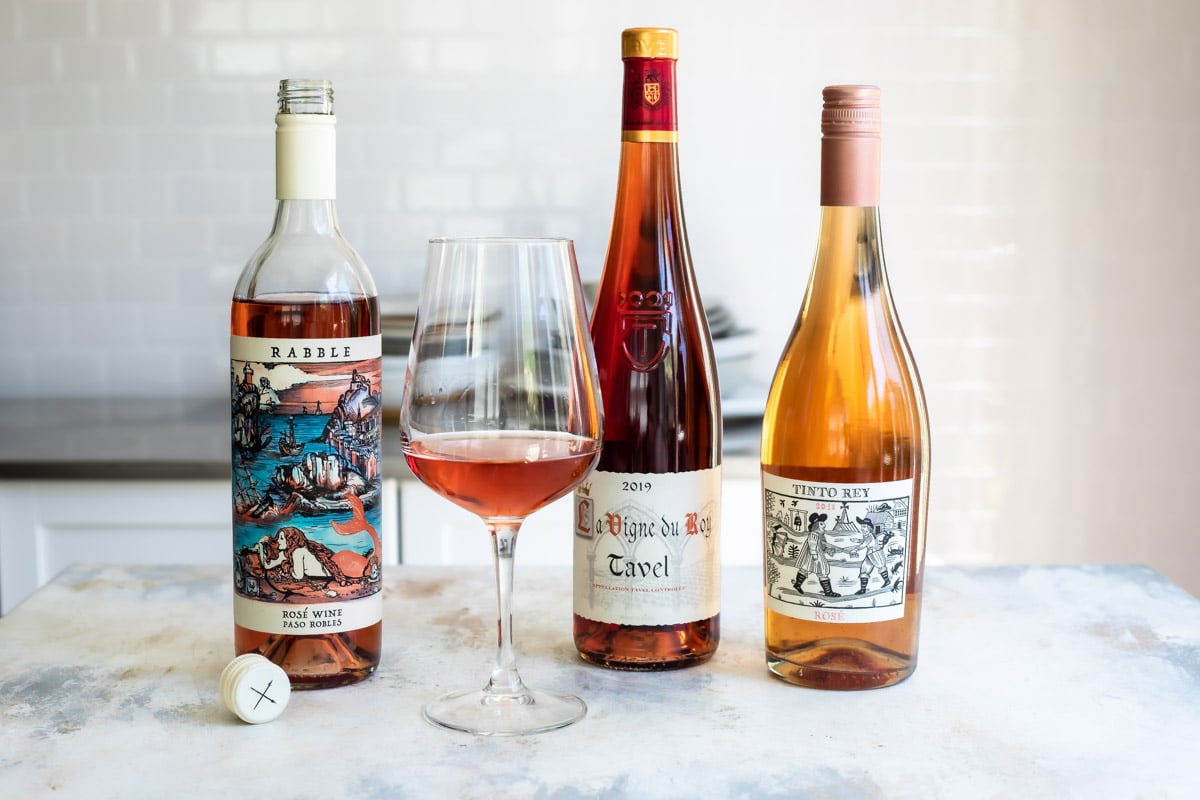
How to Serve Rosé Wine
Are you serving your rosé too warm? No way—well, not anymore, once you have this wine temperature serving guide in your back pocket. The best temperature to serve rosé wines is around 50 to 55 degrees F.
- Sparkling: 40-50 degrees F
- Lighter whites: 45-50 degrees F
- Fuller whites and rosés: 50-55 degrees F
- Lighter reds: 55-60 degrees F
- Fuller reds: 60-65 degrees F
Refrigerate your bottle for 2 ½ to 3 hours before you plan to serve should bring it to around the ideal temp. After uncorking and pouring the wine, pop it back into the fridge, keep it cool on the table in a wine bottle chiller, or wrap it in a dish towel or large napkin to insulate the juice.
If you have room in your collection, invest in a set of rosé wine glasses. Otherwise, universal or classic white wine glasses can play double duty.
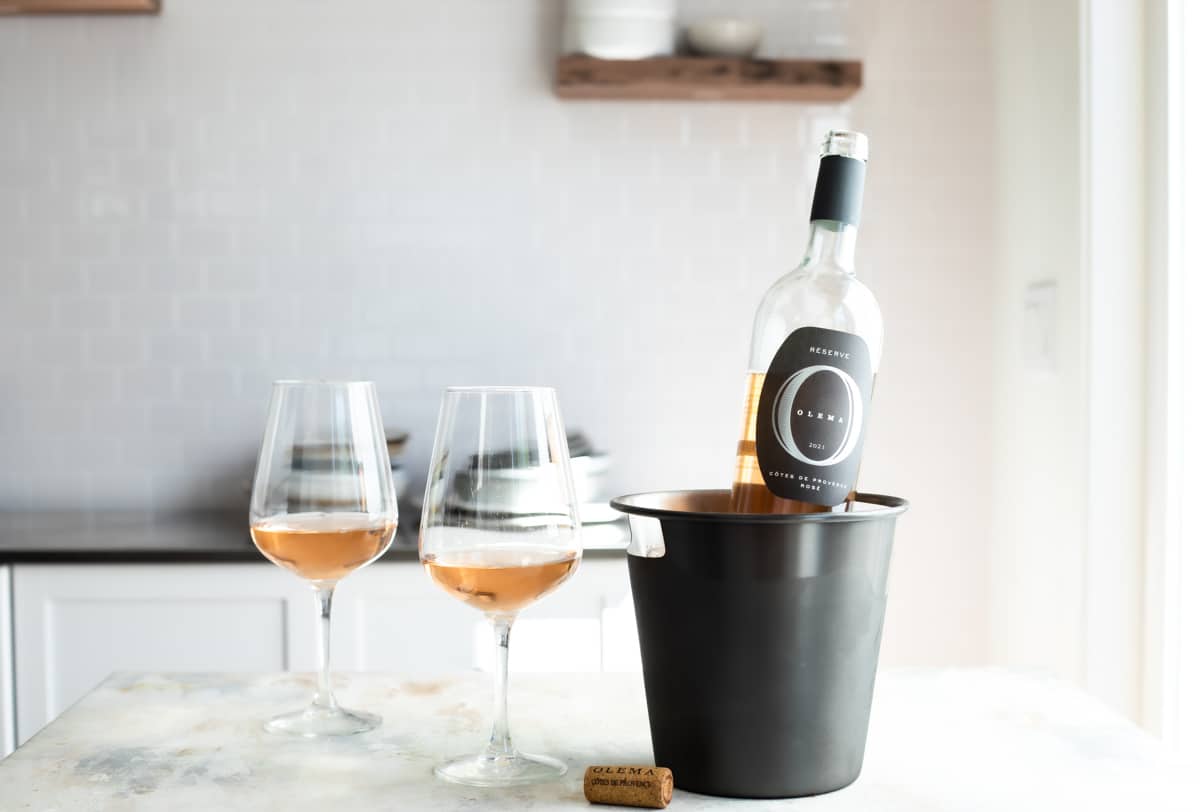
Recipes to Pair With Rosé Wine
Light to medium rosé wines generally play nicely with everything from salads and appetizers (cheese, yes, please!) to chicken and shellfish. When it comes to any summertime soirée, this style of pink wine is your BFF.
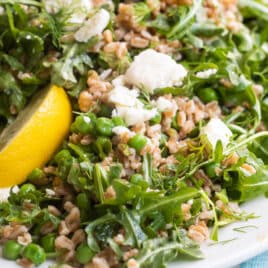
1
Farro Salad with Peas and Feta

2
Mezze Platter

3
Baked Brie Recipe
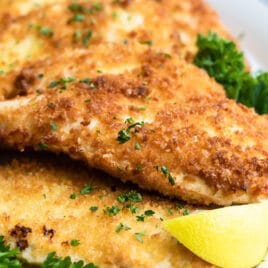
4
Chicken Schnitzel
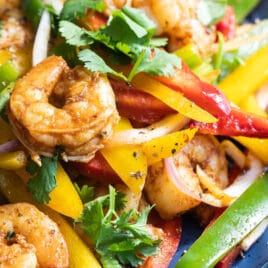
5
Shrimp Fajitas
Medium to full rosé wines can also pair nicely with chicken, as well as your holiday turkey, lighter barbecue main dishes, burgers, and pizza.
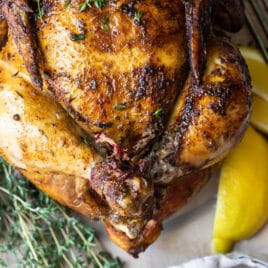
6
How to Make Rotisserie Chicken
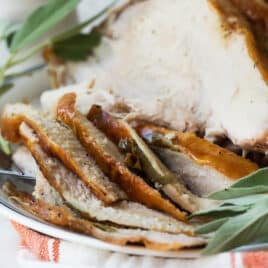
7
Roasted Turkey Breast
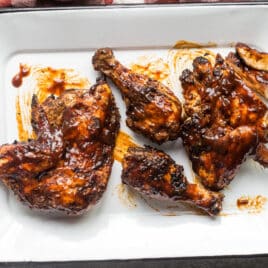
8
Grilled BBQ Chicken

9
Best Bacon Cheeseburger

10
Taco Pizza
If you’re just starting out in the wine world, check out my guides for the basics and beyond:
- A Guide to White Wine
- A Guide to Red Wine
- A Guide to Sparkling Wine
- The Best Wine Aerators
- The Biggest Wine Myths, Resolved
- Best Electric Wine Openers
- Best Under Counter Wine Fridges
Meggan Hill is a classically-trained chef and professional writer. Her meticulously-tested recipes and detailed tutorials bring confidence and success to home cooks everywhere. Meggan has been featured on NPR, HuffPost, FoxNews, LA Times, and more.